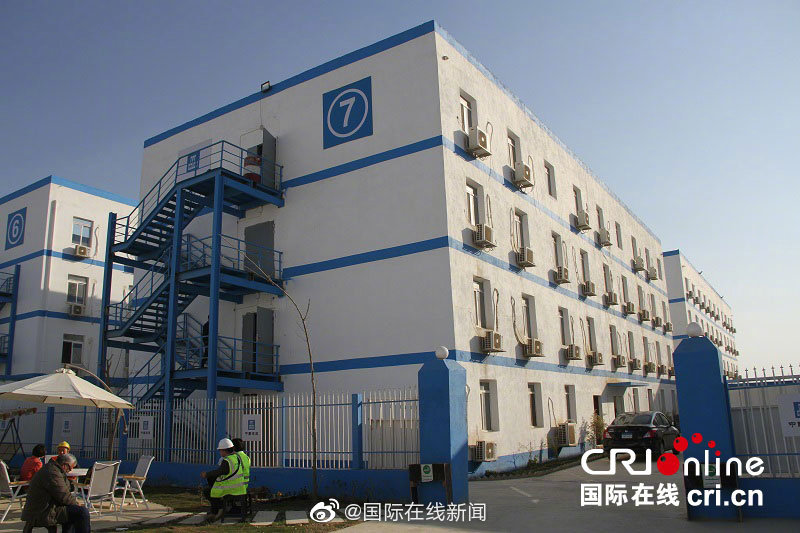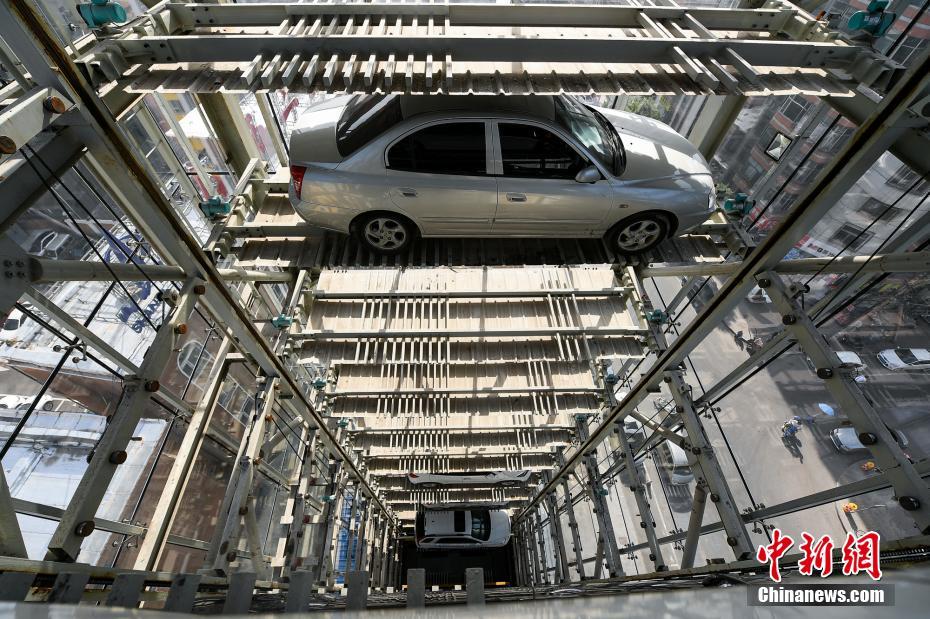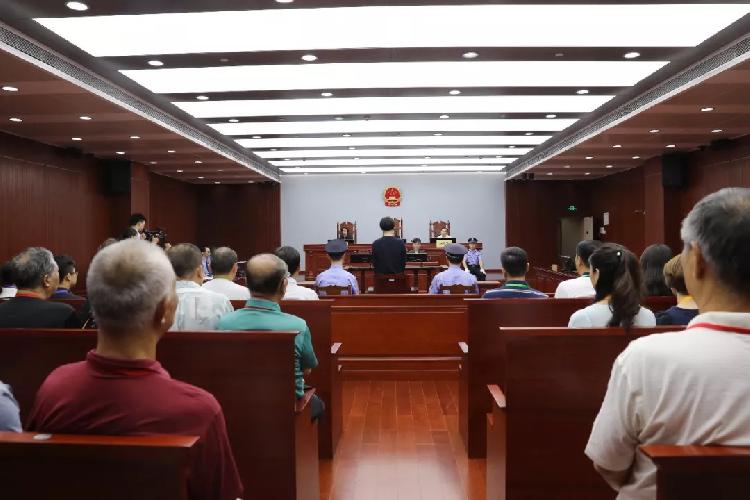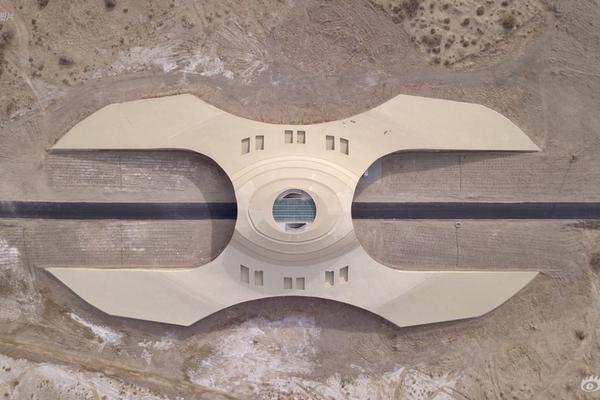
1. Engine braking is to use the compression resistance, intake and exhaust resistance and internal friction generated by the engine compression stroke to brake the drive wheel. Generally, it is only used in special environments, such as ice and snow, muddy roads or long slopes. It generally acts on the driving wheel.
2. Driving brake, engine brake, and parking brake are all deceleration methods when the car needs to slow down or stop. Driving brake is the brake used by the car when driving, parking brake is the brake used by the car when it is stationary, and engine brake is the car on a long slope. Brakes used on the road surface.
3. Use the compression resistance generated by the compression stroke of the engine, the internal friction and the intake and exhaust resistance form a braking effect on the drive wheel. Driving brake refers to foot brake.Parking brake, that is, the parking gear in the handbrake or automatic transmission, locks the transmission shaft or rear wheel.
4. Engine braking, driving brake and parking braking are all deceleration methods when the car needs to slow down or stop. Driving brake is the braking used by the car when driving, parking brake is the braking used by the car when it is stationary, and engine braking is the car on a long slope. Brakes used on the road surface.
The so-called "engine braking" is a term for driving behavior, which refers to the use of the resistance generated when the engine is running to effectively controlSpeed, the two measures you mentioned above, "downshifting" and "loose the accelerator", can achieve the purpose of using engine resistance to control the speed.
[Edit this paragraph] Introduction The use of engine braking refers to lifting the accelerator pedal without leaving the engine, using the compression resistance generated by the compression stroke of the engine, internal friction and intake and exhaust resistance to form a braking effect on the drive wheel.
The so-called engine braking, simply put, is to use the resistance generated when the engine is running to effectively control the speed. ( The premise is that it must be geared when driving) There are generally two ways to use engine braking. One is to release the accelerator and let the car slide by itself, (with gear), which can avoid frequent gear shifting and save fuel.
Engine braking is a term for driving behavior. It refers to the use of startingThe resistance generated during the operation of the machine to effectively control the speed. The usual two measures of "downshifting" and "loose throttle" can achieve the purpose of using engine resistance to control the speed.
"Engine braking" is a term for driving behavior. It refers to the effective control of the speed of the vehicle by using the resistance generated by the operation of the engine. Both measures "downshift" and "release throttle" can achieve the purpose of using engine resistance to control the speed. Let's take a look.
The use of engine braking is to use the resistance of engine operation, through change The speed box gear connection means to slow down the wheels. It is more suitable for combination with driving brakes when going down long slopes, which can improve the efficiency of driving brakes and reduce the heating of driving brake parts due to long-term use, which is more conducive to driving safety.
The common meaning of engine braking refers to the process of reducing the speed of the car through the hybrid operation between the accelerator and the brake pedal while driving. It can also be understood as using the engine to help brake and reduce the use of brakes.
The so-called "engine braking" is a term for driving behavior, which refers to the use of the resistance generated during engine operation to effectively control the speed. The two measures you mentioned above can achieve the purpose of using engine resistance to control the speed.
"Engine braking" is a driving behavior, which refers to the use of the resistance generated when the engine is running to effectively control the speed of the car. As you said, "downshifting" and "loose the accelerator", which can achieve the purpose of using engine resistance to control the speed.
Use the resistance generated when the engine is running to effectively control the speed. The two measures of "downshifting" and "loose the accelerator" can achieve the purpose of using engine resistance to control the speed.
Differences: the driving brake is the foot brake, the engine brake is the clutch, the parking brake is the hand brake, and the retarder is the electric brake.
Driving brake, engine brake, and parking brake are all deceleration methods when the car has to slow down or stop. Driving brake is the brake used by the car when driving, parking brake is the brake used by the car when it is stationary, and engine brake is the car on the long slope. The brake used at the time.
The driving brake is the brake used when the car is driving, the parking brake is the brake used when the car is stationary, and the engine brake is the brake used when the car is downhill. The details are as follows: driving brake. Brake is what people call stepping on the brake, commonly known as "foot brake".That is, step on the brake to slow down when the car is driving.
The difference between driving brakes and parking brakes is that they are used in different environments. Driving brakes are generally used when the car is driving normally, and parking brakes are used to prevent the car from sliding when parking.
The parking brake is often the so-called handbrake. Its function is to prevent the car from sliding back and forth after stopping. The professional name of the handbrake is auxiliary brake, which is different from the principle of brake. It is connected to the rear brake shoes with a steel wire to brake the car.
The driving brake converts the mechanical force of the brake pedal into liquid pressure, and then transmits the liquid pressure to the brake to play the braking effect. The parking brake is braked by pulling the wire to the brake shoes. The usage scenarios are different.
1. [Pacific Automobile Network] Brake is a device with functions such as slowing down, stopping or maintaining a stop state of moving parts or moving machinery. It is a mechanical part that stops or slows down the moving parts in the machine. Commonly known as brake and brake. Brakes are mainly composed of frames, brake parts and control devices.
2, "Provide you with the following relevant content: The engine brake uses the engine brake to lift the accelerator pedal, but does not step on the clutch, and uses the compression resistance generated by the compression stroke of the engine. The internal friction force and intake and exhaust resistance form a braking effect on the drive wheel. Engine braking is to hang the gear without fuel, and the engine has no traction on the car.
3. Engine Brake is an auxiliary braking system that can reduce the speed of the vehicle.Unlike traditional braking systems, engine braking consumes the kinetic energy of the vehicle through the compression stroke of the engine, not through brake discs and brake pads.
4. Engine braking refers to using the engine brake to lift the accelerator pedal without stepping on the clutch, using the compression resistance generated by the compression stroke of the engine, internal friction and intake and exhaust resistance to form a braking effect on the drive wheel. Engine braking, that is, "towing gear" - hanging gear without oil, the engine has no traction on the car.
Pharmaceutical HS code compliance in India-APP, download it now, new users will receive a novice gift pack.
1. Engine braking is to use the compression resistance, intake and exhaust resistance and internal friction generated by the engine compression stroke to brake the drive wheel. Generally, it is only used in special environments, such as ice and snow, muddy roads or long slopes. It generally acts on the driving wheel.
2. Driving brake, engine brake, and parking brake are all deceleration methods when the car needs to slow down or stop. Driving brake is the brake used by the car when driving, parking brake is the brake used by the car when it is stationary, and engine brake is the car on a long slope. Brakes used on the road surface.
3. Use the compression resistance generated by the compression stroke of the engine, the internal friction and the intake and exhaust resistance form a braking effect on the drive wheel. Driving brake refers to foot brake.Parking brake, that is, the parking gear in the handbrake or automatic transmission, locks the transmission shaft or rear wheel.
4. Engine braking, driving brake and parking braking are all deceleration methods when the car needs to slow down or stop. Driving brake is the braking used by the car when driving, parking brake is the braking used by the car when it is stationary, and engine braking is the car on a long slope. Brakes used on the road surface.
The so-called "engine braking" is a term for driving behavior, which refers to the use of the resistance generated when the engine is running to effectively controlSpeed, the two measures you mentioned above, "downshifting" and "loose the accelerator", can achieve the purpose of using engine resistance to control the speed.
[Edit this paragraph] Introduction The use of engine braking refers to lifting the accelerator pedal without leaving the engine, using the compression resistance generated by the compression stroke of the engine, internal friction and intake and exhaust resistance to form a braking effect on the drive wheel.
The so-called engine braking, simply put, is to use the resistance generated when the engine is running to effectively control the speed. ( The premise is that it must be geared when driving) There are generally two ways to use engine braking. One is to release the accelerator and let the car slide by itself, (with gear), which can avoid frequent gear shifting and save fuel.
Engine braking is a term for driving behavior. It refers to the use of startingThe resistance generated during the operation of the machine to effectively control the speed. The usual two measures of "downshifting" and "loose throttle" can achieve the purpose of using engine resistance to control the speed.
"Engine braking" is a term for driving behavior. It refers to the effective control of the speed of the vehicle by using the resistance generated by the operation of the engine. Both measures "downshift" and "release throttle" can achieve the purpose of using engine resistance to control the speed. Let's take a look.
The use of engine braking is to use the resistance of engine operation, through change The speed box gear connection means to slow down the wheels. It is more suitable for combination with driving brakes when going down long slopes, which can improve the efficiency of driving brakes and reduce the heating of driving brake parts due to long-term use, which is more conducive to driving safety.
The common meaning of engine braking refers to the process of reducing the speed of the car through the hybrid operation between the accelerator and the brake pedal while driving. It can also be understood as using the engine to help brake and reduce the use of brakes.
The so-called "engine braking" is a term for driving behavior, which refers to the use of the resistance generated during engine operation to effectively control the speed. The two measures you mentioned above can achieve the purpose of using engine resistance to control the speed.
"Engine braking" is a driving behavior, which refers to the use of the resistance generated when the engine is running to effectively control the speed of the car. As you said, "downshifting" and "loose the accelerator", which can achieve the purpose of using engine resistance to control the speed.
Use the resistance generated when the engine is running to effectively control the speed. The two measures of "downshifting" and "loose the accelerator" can achieve the purpose of using engine resistance to control the speed.
Differences: the driving brake is the foot brake, the engine brake is the clutch, the parking brake is the hand brake, and the retarder is the electric brake.
Driving brake, engine brake, and parking brake are all deceleration methods when the car has to slow down or stop. Driving brake is the brake used by the car when driving, parking brake is the brake used by the car when it is stationary, and engine brake is the car on the long slope. The brake used at the time.
The driving brake is the brake used when the car is driving, the parking brake is the brake used when the car is stationary, and the engine brake is the brake used when the car is downhill. The details are as follows: driving brake. Brake is what people call stepping on the brake, commonly known as "foot brake".That is, step on the brake to slow down when the car is driving.
The difference between driving brakes and parking brakes is that they are used in different environments. Driving brakes are generally used when the car is driving normally, and parking brakes are used to prevent the car from sliding when parking.
The parking brake is often the so-called handbrake. Its function is to prevent the car from sliding back and forth after stopping. The professional name of the handbrake is auxiliary brake, which is different from the principle of brake. It is connected to the rear brake shoes with a steel wire to brake the car.
The driving brake converts the mechanical force of the brake pedal into liquid pressure, and then transmits the liquid pressure to the brake to play the braking effect. The parking brake is braked by pulling the wire to the brake shoes. The usage scenarios are different.
1. [Pacific Automobile Network] Brake is a device with functions such as slowing down, stopping or maintaining a stop state of moving parts or moving machinery. It is a mechanical part that stops or slows down the moving parts in the machine. Commonly known as brake and brake. Brakes are mainly composed of frames, brake parts and control devices.
2, "Provide you with the following relevant content: The engine brake uses the engine brake to lift the accelerator pedal, but does not step on the clutch, and uses the compression resistance generated by the compression stroke of the engine. The internal friction force and intake and exhaust resistance form a braking effect on the drive wheel. Engine braking is to hang the gear without fuel, and the engine has no traction on the car.
3. Engine Brake is an auxiliary braking system that can reduce the speed of the vehicle.Unlike traditional braking systems, engine braking consumes the kinetic energy of the vehicle through the compression stroke of the engine, not through brake discs and brake pads.
4. Engine braking refers to using the engine brake to lift the accelerator pedal without stepping on the clutch, using the compression resistance generated by the compression stroke of the engine, internal friction and intake and exhaust resistance to form a braking effect on the drive wheel. Engine braking, that is, "towing gear" - hanging gear without oil, the engine has no traction on the car.
Timber (HS code ) import patterns
author: 2024-12-23 17:37Industry-wise trade data breakdowns
author: 2024-12-23 17:08Refined sugar HS code identification
author: 2024-12-23 16:51Refrigeration equipment HS code checks
author: 2024-12-23 15:59Non-tariff barriers by HS code
author: 2024-12-23 15:47Customs data verification services
author: 2024-12-23 17:54Electronics global trade by HS code
author: 2024-12-23 17:17How to optimize shipping schedules
author: 2024-12-23 16:48How to comply with origin rules
author: 2024-12-23 16:05HS code-based competitor benchmarking
author: 2024-12-23 15:17 Customs procedure optimization
Customs procedure optimization
448.42MB
Check International trade compliance dictionary
International trade compliance dictionary
556.82MB
Check shipment tracking services
shipment tracking services
215.54MB
Check Eco-friendly products HS code mapping
Eco-friendly products HS code mapping
133.96MB
Check Ready-to-eat meals HS code classification
Ready-to-eat meals HS code classification
464.78MB
Check How to map complex products to HS codes
How to map complex products to HS codes
354.64MB
Check HS code-based predictive analytics
HS code-based predictive analytics
726.58MB
Check Refined metals HS code references
Refined metals HS code references
675.45MB
Check HS code-driven freight route adjustments
HS code-driven freight route adjustments
242.53MB
Check Import risk analysis metrics
Import risk analysis metrics
361.44MB
Check Advanced trade data analytics techniques
Advanced trade data analytics techniques
579.59MB
Check Dynamic supplier inventory analysis
Dynamic supplier inventory analysis
551.32MB
Check Steel industry trade insights
Steel industry trade insights
368.74MB
Check How to comply with global trade regulations
How to comply with global trade regulations
184.59MB
Check Global trade risk heatmaps
Global trade risk heatmaps
253.25MB
Check Import restrictions by HS code category
Import restrictions by HS code category
523.16MB
Check Global trade credit risk analysis
Global trade credit risk analysis
996.51MB
Check Tobacco products HS code verification
Tobacco products HS code verification
427.23MB
Check HS code-based freight consolidation
HS code-based freight consolidation
241.78MB
Check How to use data for HS code classification
How to use data for HS code classification
379.14MB
Check Surgical instruments HS code classification
Surgical instruments HS code classification
779.38MB
Check Cost-effective trade analytics solutions
Cost-effective trade analytics solutions
248.69MB
Check How to access niche export markets
How to access niche export markets
635.58MB
Check West African HS code trade guides
West African HS code trade guides
245.46MB
Check Trade data integration with BI tools
Trade data integration with BI tools
696.13MB
Check Country-wise HS code tariff relief
Country-wise HS code tariff relief
657.38MB
Check HS code-based landed cost calculations
HS code-based landed cost calculations
464.47MB
Check HS code advisory for inbound compliance
HS code advisory for inbound compliance
486.64MB
Check Trade data-driven supply chain optimization
Trade data-driven supply chain optimization
986.75MB
Check Value-added exports by HS code
Value-added exports by HS code
163.68MB
Check WTO trade compliance resources
WTO trade compliance resources
512.72MB
Check supply chain intelligence
supply chain intelligence
449.61MB
Check HS code filters for bulk commodities
HS code filters for bulk commodities
711.83MB
Check HS code-based SLA tracking for vendors
HS code-based SLA tracking for vendors
554.21MB
Check HS code-driven cost variance analysis
HS code-driven cost variance analysis
776.47MB
Check On-demand trade data queries
On-demand trade data queries
635.52MB
Check
Scan to install
Pharmaceutical HS code compliance in India to discover more
Netizen comments More
190 How to access historical shipment records
2024-12-23 17:31 recommend
1857 Paper and pulp HS code insights
2024-12-23 17:22 recommend
2593 In-depth customs data analysis tools
2024-12-23 17:17 recommend
1443 HS code-driven supplier performance metrics
2024-12-23 16:04 recommend
1878 Exotic spices HS code classification
2024-12-23 15:51 recommend